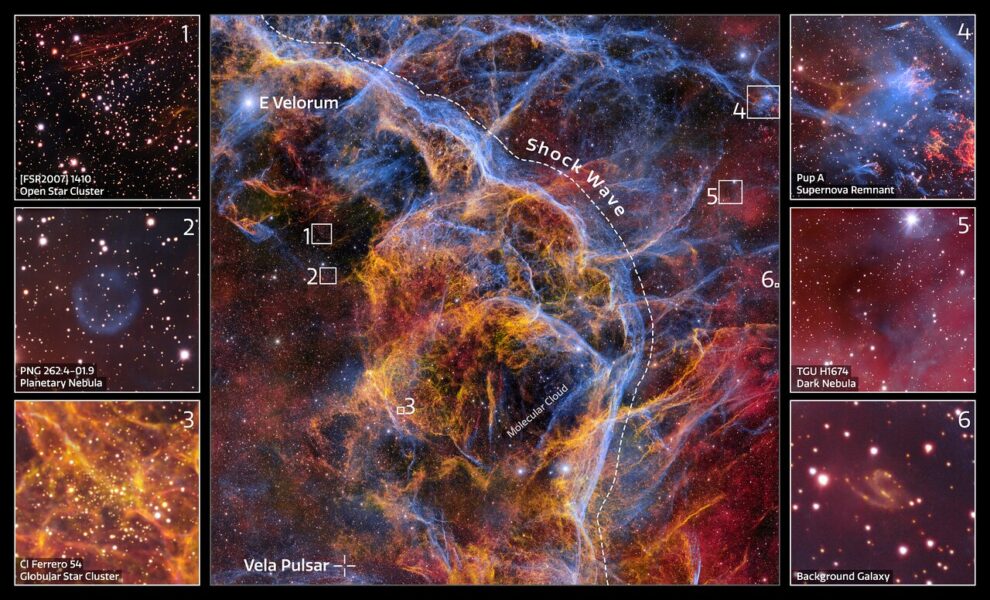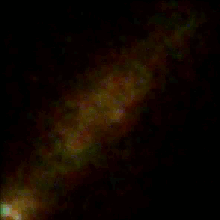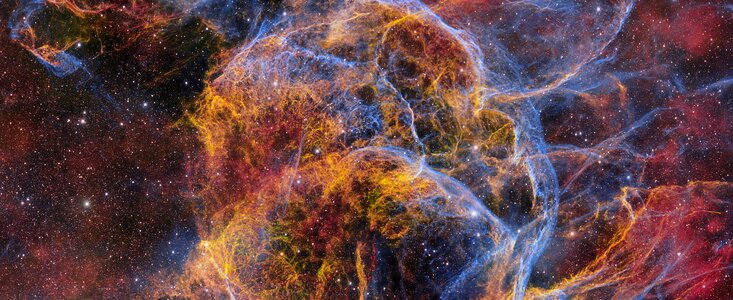In the southern constellation of Vela is the remains of a supernova that exploded around 11,000 years ago. The most studied supernova remnant in the sky, it is also the closest to Earth. At 800 light years away, however, it’s not exactly around the corner.
From its dry, clear mountaintop, Chile’s Dark Energy Camera (DECam) recently captured a 1.3 gigapixel image of what’s left of the exploded star.
This is the DECam’s largest-ever image and is detailed enough to show the dust filaments and gas tendrils of the remnant stretching across 100 light years. The camera used three special filters. Each collected a specific color of light. The researchers then stacked the images on top of each other to produce the high-resolution color composite we see above.
Capturing the image was not easy. This might seem surprising since the remnant spans an area in the heavens 20 times larger than that of the full moon. Stargazers in the southern hemisphere with a decent telescope can see it, lodged between the stars Suhail and Suhail al Muhlif in Vela.
However, it would not look particularly impressive to the naked eye. It’s one of those things, like the northern lights, that look much better as a photo.

Some of the most interesting objects within the Vela Supernova Remnant image. Photo: NSF/NOIRLab
Infrared vision
That’s because the DECam sees wavelengths invisible to the human eye. Our visible light spectrum ranges from 380nm to 700nm, while the DECam photographs across wavelengths from 400nm to 1,080nm. This meant that it captured infrared as well as visible light, bringing those wispy gas tendrils stretching out from the nebula into focus.
Though the explosion happened 11,000 years ago, the remnant is still expanding.
“When the star exploded, its outer layers were violently stripped away and flung into the surrounding region, driving a shockwave that is still visible today,” said the astronomers. “As the shock wave expands, the hot, energized gas flies away from the point of detonation, compressing and interacting with the interstellar medium to produce stringy blue and yellow filaments.”
The original star never fully disappeared. Its core formed a neutron star that still peeks from within the supernova remnant. This Vela Pulsar, just 10 to 12 kilometers wide, has such a strong magnetic field that it emits radiation beams several times a second, like the blips of a rotating lighthouse bulb.

Gamma rays from the Vela Pulsar. Photo: Wikipedia






